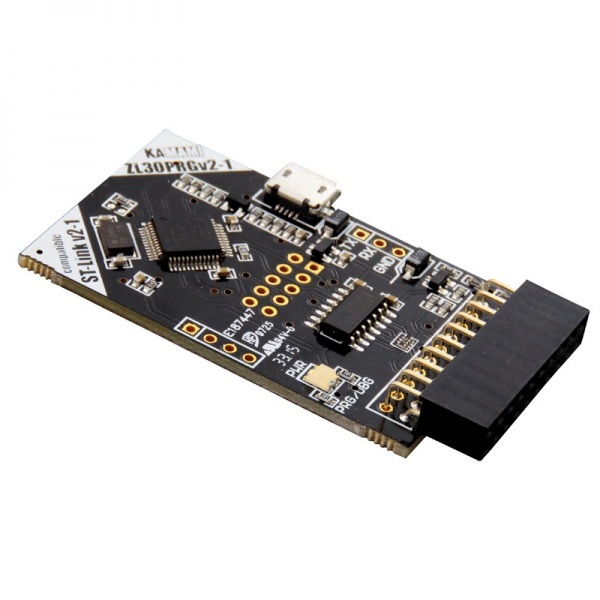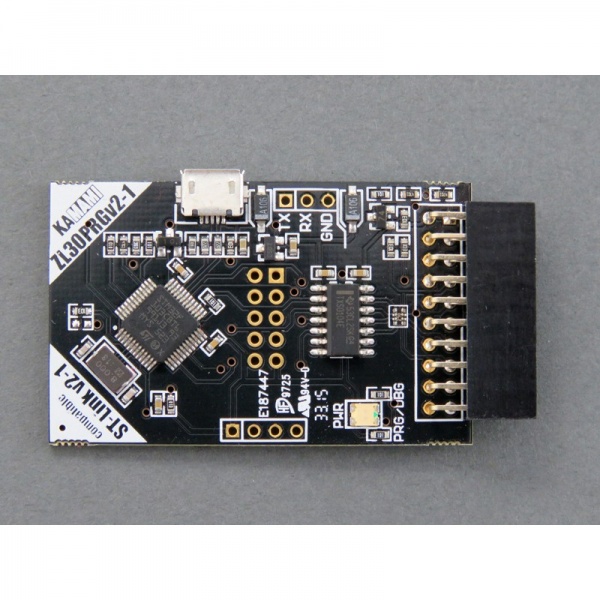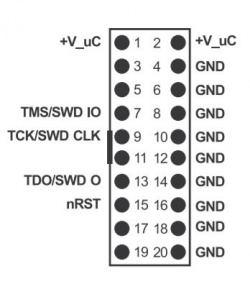ZL30PRGv2-1
From Kamamilabs.com - Wiki


Description
An innovate programmer--debugger with the USB interface. It supports the STM32 microcontrollers thru SWD interface. ZL30PRGv2-1 is fully compatible with the STMicroelectronics ST-Link/V2-1. It also has the function of USB-UART converter.
The programmer is working with the PC using USB interface. The ZL30PRGv2-1 is supported by popular IDE's: uVision (by Keil/ARM, for STM32), IAR Embedded Workbench (by IAR, for STM32), True Studio (by Atollic, for STM32), VX-toolset for ARM Cortex-M (by TASKING, for STM32).

Paramters
- embedded IDC20 female connector,
- allows to flash and debug STM32 microcontrollers
- fully compatbile with the ST-Link/V2-1 (STMicroelectronics),
- it works with: µVision (Keil), IAR Embedded Workbench (IAR), True Studio (Atollic), VX-toolset for ARM Cortex-M (TASKING),
- embedded microUSB connector,
- an USB-UART function (with pinout compatble with KAMAMI KAmodRS),
- supplied thru USB,
- possibility of firmware upgrade
- target Voltages range:
- SWD: 1.65...3.6V,
- Working temperature range: 0...50°C.
Standard equipment
| Code | Description |
|---|---|
| ZL30PRGv2-1 |
|
Connecting the programmer to a STM32 target device
SWD signals for programming and debugging the STM32 targets are present on the IDC20 connector. Its pin-out is compatbile with the industrial 20-pin JTAG standard (as illustrated on the drawings below), so the programmer could work with any STM32 evaluation boards which uses IDC20 JTAG connector (ZL27ARM, ZL30ARM, STM32Butterfly – Kamami, Keil/ARM evaluation boards, etc).
| Note!
The programmer does not support JTAG interface! |
|---|

| Note!
ZL30PRGv2-1 is powered from the USB connector. The supply voltage is not forwarded to the programmed/debugged target, so it needs to be supplied externally. |
|---|

Interfacing UART signals to the programmer
The programmer has a Virtual COM Port (VCOM) option. RxD and TxD signals are available on the connector (as illustrated on the photo below). The drilled pads allow to solder-in Goldpin headers. By this function, the programmer can replace the KAmodRS module.
